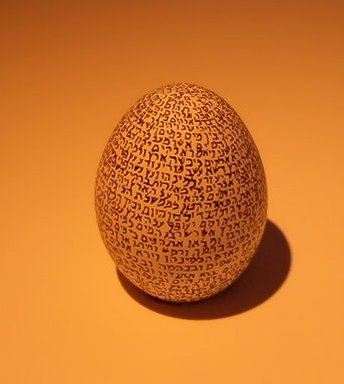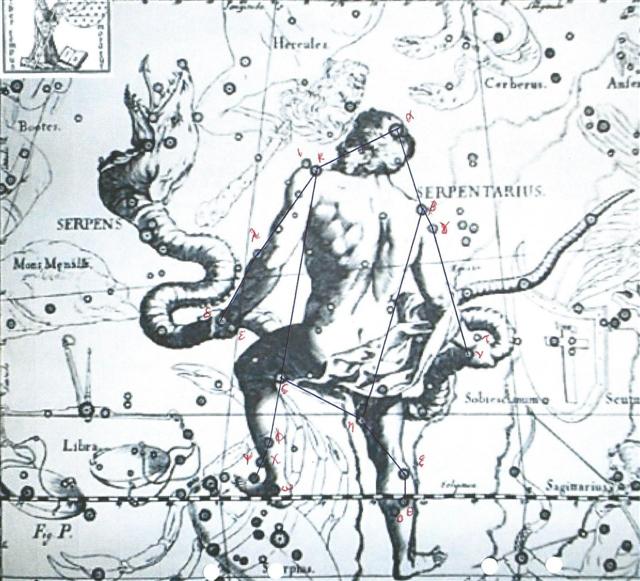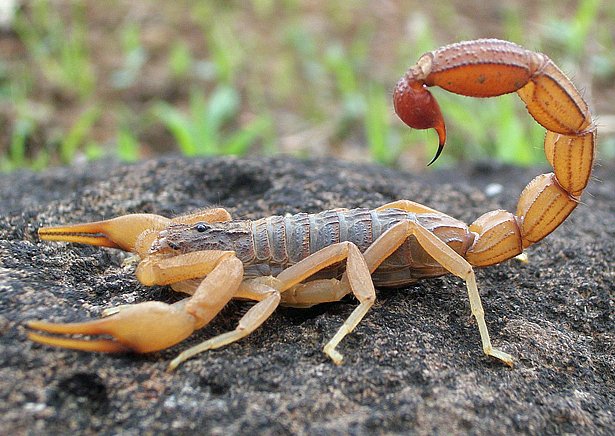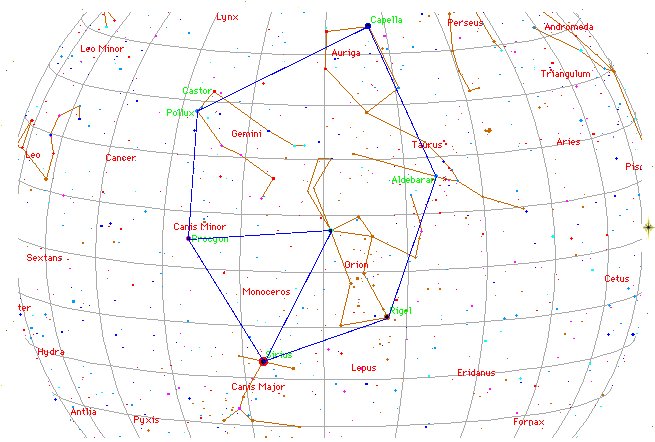464. Once again. There were 3 lunar
synodic months when Betelgeuze was invisible and
then followed a period which was possible to
associate with the 9 months of human pregnancy - when
the club of Orion could be observed to be down in the Milky
Way:
The glyph type koti used at
Mercury and Venus probably stood for how there were
periods of invisibility which 'broke apart' periods of visibility.

|
WEDNESDAY (THE DAY OF MERCURY) |
 |
 |
 |
 |
 |
 |
|
Hb9-33 |
Hb9-34 |
Hb9-35 |
Hb9-36 |
Hb9-37 |
Hb9-38 |
... In the H text there is a
distinction between the koti of the dark
Mercury and the koti of the bright Venus:
 |
13 |
 |
|
Mercury |
Venus |
In the parallel P text this was
not so, possibly because its creator was intent
on showing how they both were inside the orbit
of the Earth:
 |
9 |
 |
|
Mercury |
Venus |
If the human period of gestation
corresponded to the period when Betelgeuze was
visible, then the period of its invisibility in the
night sky ought to correspnd to the time when
there was no pregnancy down on earth. Early in
the year Betelgeuze was not visible and down on
earth the spring growth was still dormant.
...
In the Ilocos region of northern
Philippines, the Ilocano people fill two
halved coconut shells with diket (cooked
sweet rice), and place liningta nga itlog
(halved boiled eggs) on top of it. This ritual
is known as niniyogan and is an offering
made to the deceased and one's past ancestors.
This accompanies the palagip (prayer to
the dead).
A
coconut (Sanskrit:
narikela)
is an essential element of rituals in Hindu
tradition. Often it is decorated with bright
metal foils and other symbols of auspiciousness.
It is offered during worship to a Hindu god or
goddess. Irrespective of their religious
affiliation, fishermen of India often offer it
to the rivers and seas in the hopes of having
bountiful catches. Hindus often initiate the
beginning of any new
activity by breaking a coconut to ensure the
blessings of the gods and successful completion
of the activity. The Hindu goddess of well-being
and wealth, Lakshmi, is often shown
holding a coconut. In the foothills of the
temple town of Palani, before going to
worship Murugan for the Ganesha,
coconuts are broken at a place marked for the
purpose. Every day, thousands of coconuts are
broken, and some devotees break even 108
coconuts at a time as per the prayer. In tantric
practices, coconuts are sometimes used as
substitutes for human skulls. In Hindu wedding
ceremonies, a coconut is placed over the opening
of a pot, representing a womb ...
|
Polygon: |
n |
A |
A / n |
|
|
triangle |
3 |
180° |
60° |
120 = 2 * 60 |
|
rectangle |
4 |
360° |
90° |
270 = 3 * 90 |
|
pentagon |
5 |
540° |
108° |
432 = 4 * 108 |
|
hexagon |
6 |
720° |
120° |
600 = 5 * 120 |

...
Marija Gimbutas: 'To sleep within the Goddess's
womb was to die and to come to life anew'. In a
system of reincarnation the old one must die in
order to be reborn, of course. At midsummer Sun
comes to a standstill, and this must therefore
be an occasion when the 'flame of life' had to
be transported into a new body
...
The synodic cycle of Venus was
584 days = 540 + 44, and from the person
living inside (tagata noho ki roto) to
the growing poporo tree there were also
44 right ascension days:
Poporo.
A plant (Solanum
forsteri); poporo haha, a sort of
golden thistle. Vanaga. A
berry whose juice is mixed with ashes of ti
leaves in tattoing. Ta.: oporo, a
capsicum plant. The Tahiti oporo is not a
degradation of poporo but is the original
poro stem augmented by that o
which in Tahiti is word-formative in a sense too
elusive to find expression in European ideas.
Mgv.: poporo, the July season when the
leaves fall. Mq.: pororo, dry, arid. Sa.:
palolo-mua, July. Ma.: paroro,
cloudy weather. Poporohiva, milk thistle.
Churchill.
|
60 |
 |
 |
 |
127 |
 |
 |
 |
42 |
|
Ca3-10 |
Ca3-11 |
Ca3-12 (63) |
Ca7-23 |
Ca7-24 (192) |
Ca7-25
|
|
ki te pa |
kua hua |
ki te kotiga |
e marama noho i tona
nohoga |
te hare pure e tagata
noho ki roto |
tagata i te marama |
|
9 weeks |
260 / 2 days
= 364 / 2 - 104 / 2 |
The first koti glyph
in the text was evidently defined to be
where the Sun once upon a time had reached the
Yed 'door' leading away from the northern summer
(at the time of the
Bull), i.e. when the Full Moon had reached the
opposite Hyadum door of entrance at the beginning of
the southern summer:
|
JAN 19 |
20 |
21 (101 - 80) |
22 → Mercury |
|
MARCH 17 (76 = 140 - 64) |
18 |
19 |
20 (79 = 22 + 3 * 19) |
 |
 |
 |
 |
|
Ca3-9 |
Ca3-10 |
Ca3-11 |
Ca3-12 (63 = 7 * 9) |
|
tapamea tagata kua
iri |
ki te pa |
kua hua |
ki te kotiga |
|
Hua. 1.
Testicle. 2. Figuratively: son,
hua tahi, only son; fruits of
the earth; to grow well (of fruits).
3. To cause a fight, a quarrel.
Hua-ai, generation, as
lineage of direct descendents;
contemporaries. Huahua,
coccyx of bird, 'parson's
nose': huahua moa, huahua
uha. Huataru, a
creeper (Chenopodium
ambiguum). Vanaga. 1. The same;
ki hua, again, to continue,
to strain, to struggle, to move, to
repeat, over and above. Mq.: hua,
the same, to return, to recommence.
2. To bloom, to sprout; flower,
fruit (huaa); huaa
tae oko, huaa vahio, young
fruit; hua atahi, only son;
huahaga, fruit; mei te
huahaga o tokoe kopu, the fruit
of thy body; tikea huahaga,
deceptive appearance. P Pau.: ua,
to be born; huahaga, lineage.
Mgv.: hua, to produce (said
of trees, grain, etc.), blooming
time of flowers, abundance of fruit.
Mq.: hua, to produce, to bear
fruit. Ta.: ua, to sprout.
Huahua. 1. Tailless fowl. 2.
Vein, tendon, line. 3. Mgv.:
huahua, pimples covering the
face. Ta.: huahua, id. Mq.:
hua, tubercules. Sa.:
fuafua, abscess on hand or feet.
Ma.: huahua, small pimples.
Pau.: Hua-gakau, rupture.
Ta.: áau, entrails. Sa.:
ga'au, id. Ma.: ngakau,
id. Churchill. 1. Fruit. 2. Egg. 3.
Tā
hua = 'genealogical writing' or
'same writing'. Fischer. |
|
CLOSE TO THE FULL MOON: |
|
May 20 (140)
4h (60.9)
JĪSHUĬ (Piled-up Waters) =
λ
Persei
(60.7)
COR
CAROLI (α Canum Ven.)
|
21
υ Persei (61.2) |
22 (21 + 121 = 142)
BEID (Egg) =
ο¹
Eridani
(62.2),
μ
Persei (62.8)
VINDEMIATRIX ( ε Virginis) |
23 (11 * 13 = 143)
Al Dabarān-2 (The Follower)
HYADUM I = γ Tauri
(63.4)
*22 = *63.4 - *41.4 |
|
'April 23 (*60 - * 27 = *33) |
24 |
25 (115
→ Mercury → Hermes Trismegistos) |
26 |
|
... [E:17] On
the twenty-fifth day of the first
month
(Vaitu Nui), Ira and
Makoi set sail; on the first
day of June ('Maro'), the bow
of Ira's canoe appeared on
the distant horizon, came closer and
closer on its course, and sailed
along, and finally (one) could see
the (new home) land ... |
|
"April 9 (140 - 41 = 99) |
10 (100) |
11 (*21) |
12 |
 |
|
CLOSE TO THE SUN: |
|
Nov 19 (140 + 183 = 323)
16h (243.5)
ACRAB (Scorpion) = β Scorpii, JABHAT
AL ACRAB (Forehead of the Scorpion)
= ω Scorpii
(243.3), θ Lupi,
RUTILICUS = β Herculis
(243.5),
MARFIK (Elbow) = κ Herculis
(243.7), φ Herculis (243.8)
|
20
ψ
Scorpii (244.6),
LESATH (Sting) =
ν
Scorpii
(244.8) |
21 (*245)
χ
Scorpii (245.1),
YED PRIOR (Hand in Front) =
δ
Ophiuchi,
δ
Tr.
Austr. (245.5) |
22
YED POSTERIOR (Hand Behind) =
ε
Ophiuchi,
RUKBALGETHI SHEMALI (Northern Knee
of the Giant) =
τ
Herculis
(246.6).
δ
Apodis (246.7),
ο
Scorpii (246.8) |
 |
The 2nd koti seems to
have been associated with Epimenides who
lived (kua rere) to be 157 years - or
according to other sources 154 years.
Rere. To jump; to
run; to fly. Rere-taúra, to carry a
child astride on one's shoulder: ku
rere-taúra-á i te poki e te matu'a ki te
gao, the mother carries her child
astride her neck. Vanaga. 1. To fly, to run,
to leap, to scale, to be carried away by the
wind; ika rere, flying fish; rere
aruga, to rebound; hetuu rere,
meteor, flying star. Hakarere, to
leap. P Pau.: rere, to soar, to fly;
fakarere, to precede. Mgv., Ta.:
rere, to fly, to leap. 2. To come, to
reach to. Mq.: éé mai, to come. 3. To
swerve, to deviate. (4. Hakarere, to
cease, desist, postpone, quit, vacation;
tae hakarere, perseverance. Mq.: rere,
to disappear. 5. Hakarere, to save,
preserve, put, place, reserve, burden,
destine. 6. Hakarere, to abandon,
forsake, give up, depose, expose, leave,
omit, abjure, repudiate; hakarere ki te
hau, uncover the head; hakarere ki te
vie, to divorce, hakarere ki raro,
to put down, tooa te kiko e ivi i
hakarere, to strip off the flesh. Mq.:
éé, to run away, to escape. 7.
Hakarere? Ikapotu hakarere, to
abut, to adjoin; e tahi hakarere,
synonym.) Churchill. Vi.: Lele, the
end of a branch farthest from the body of a
tree; leletha, to bend a branch in
order to gather the fruit on it. Churchill
2. In the present phase of Polynesian
lele so much means to fly that the
plainest way of particularizing birds is to
describe them as the flying animals,
manulele. But to manifest that flight,
an exercise or balancing of wings, was by no
means the primordial sense, for how could
that give rise to a description of water in
the water-courses? It will be no end to mass
the several significations which lele
exhibits ... Flight of birds ... Wind drive
... Meteors ... To leap ... To run ... Flow
of water ... To swim ... To sail ... These
several activities are exercised in earth,
air, and water. The common factor is the
swift motion. The means of motion cut no
figure. It is an invisible means in the
driving of the wind, the flash of the meteor
silent athwart the sky on its lethal errand,
the slip and slide of the stream in its deep
course, the set of the sea, the gliding of
the canoe upon its surface. Churchill 2.
Half
a
year
after
the
Full
Moon
had
been
at
the
Hyadum
door
she
had
reached
the
Yed
door.
Cor
Serpentis
(the
Heart
of
the
Serpent)
was
237
- 63
=
174
= 6
* 29
right
ascension
days
later
than
Hyadu m
I (γ
Tauri):
| 173 |
kotia |
kua rere |
ki te marama |
e moa |
haati kava |
e moa |
|
Koti. Kotikoti. To cut with scissors (since this is an old word and scissors do not seem to have existed, it must mean something of the kind). Vanaga. Kotikoti. To tear; kokoti, to cut, to chop, to hew, to cleave, to assassinate, to amputate, to scar, to notch, to carve, to use a knife, to cut off, to lop, to gash, to mow, to saw; kokotiga kore, indivisible; kokotihaga, cutting, gash furrow. P Pau.: koti, to chop. Mgv.: kotikoti, to cut, to cut into bands or slices; kokoti, to cut, to saw; akakotikoti, a ray, a streak, a stripe, to make bars. Mq.: koti, oti, to cut, to divide. Ta.: oóti, to cut, to carve; otióti, to cut fine. Churchill. Pau.: Koti, to gush, to spout. Ta.: oti, to rebound, to fall back. Kotika, cape, headland. Ta.: otiá, boundary, limit. Churchill. |
 |
 |
 |
 |
 |
 |
| Ca9-9 (236 + 1) |
Ca9-10 |
Ca9-11 |
Ca9-12 |
Ca9-13 |
Ca9-14 (242) |
| CLOSE TO THE FULL MOON: |
| Nov 13
κ Librae (237.2), ι Serpentis (237.4), ψ² Lupi, ρ Oct. (237.5), γ Cor. Borealis, η Librae (237.7), COR SERPENTIS = α Serpentis (237.9) |
14
π Cor. Borealis, UNUK ELHAIA (Necks of the Serpents) = λ Serpentis (238.1), CHOW = β Serpentis (238.6) |
15
κ Serpentis (239.3), δ Cor. Borealis, TIĀNRŪ = μ Serpentis (239.5), χ Lupi, (239.6), ω Serpentis (239.7), BA (= Pa) = ε Serpentis, χ Herculis (239.8). κ Cor. Borealis, ρ Serpentis (239.9) |
16
λ Librae (240.0), β Tr. Austr. (240.3), κ Tr. Austr. (240.4), ρ Scorpii (240.8) |
17 (321)
Iklīl al Jabhah-15 (Crown of the Forehead) / Anuradha-17 (Following Rādhā) / Room-4 (Hare)
ξ Lupi, λ Cor. Bor.(241.1), ZHENG = γ Serpentis, θ Librae (241.2), VRISCHIKA = π Scorpii (241.3), ε Cor. Borealis (241.5), DSCHUBBA (Front of Forehead) = δ Scorpii (241.7), η Lupi (241.9 |
18
υ Herculis (242.3), ρ Cor. Borealis (242.4), ι Cor. Borealis (242.5), θ Draconis (242.6), ξ Scorpii (242.7)
*201 = *242.4 - *41.4
SCHEDIRr (α Cassiopeiae)
|
| JULY 15 |
16 |
17 |
18 |
19 (200) |
20 |
 |
| i te mauga pu hia |
E rima ki te henua |
koia ku honui |
erua maitaki |
ko koe ra |
 |
 |
 |
 |
 |
 |
| 16h (243.5) |
Ca9-16 |
Yed Prior (Hand in Front) |
Ca9-18 (246) |
Ca9-19 |
Kajam (Club) |
|
... A very detailed myth comes from the island of Nauru. In the beginning there was nothing but the sea, and above soared the Old-Spider. One day the Old-Spider found a giant clam, took it up, and tried to find if this object had any opening, but could find none. She tapped on it, and as it sounded hollow, she decided it was empty. By repeating a charm, she opened the two shells and slipped inside. She could see nothing, because the sun and the moon did not
then exist; and then, she could not stand up because there was not enough room in the shellfish. Constantly hunting about she at last found a snail. To endow it with power she placed it under her arm, lay down and slept for three days. Then she let it free, and still hunting about she found another snail bigger than the first one, and treated it in the same way. Then she said to the first snail: 'Can you open this room a little, so that we can sit down?' The snail said it could, and opened the shell a little. Old-Spider then took the snail, placed it in the west of the shell, and made it into the moon. Then there was a little light, which allowed Old-Spider to see a big worm. At her request he opened the shell a little wider, and from the body of the worm flowed a salted sweat which collected in the lower half-shell and became the sea. Then he raised the upper half-shell very high, and it became the sky. Rigi, the worm, exhausted by this great effort, then died. Old-Spider then made the sun from the second snail, and placed it beside the lower half-shell, which became the earth ... |
| CLOSE TO THE FULL MOON: |
| Nov 19 |
20 |
21 (325) |
22 |
23 |
24 |
| 'Oct 23 |
24 |
25 (298 = 325 - 27) |
26 |
27 |
28 |
| "Oct 9 |
10 |
11 (284 = 325 - 41) |
12 |
13 |
14 |
| SEPT 16 |
17 |
18 (261 = 325 - 64) |
19 |
20 |
21 |
| JULY 21 |
22 → π |
23 (325 - 121 = 204) |
24 |
25 |
26 |
 |
|












